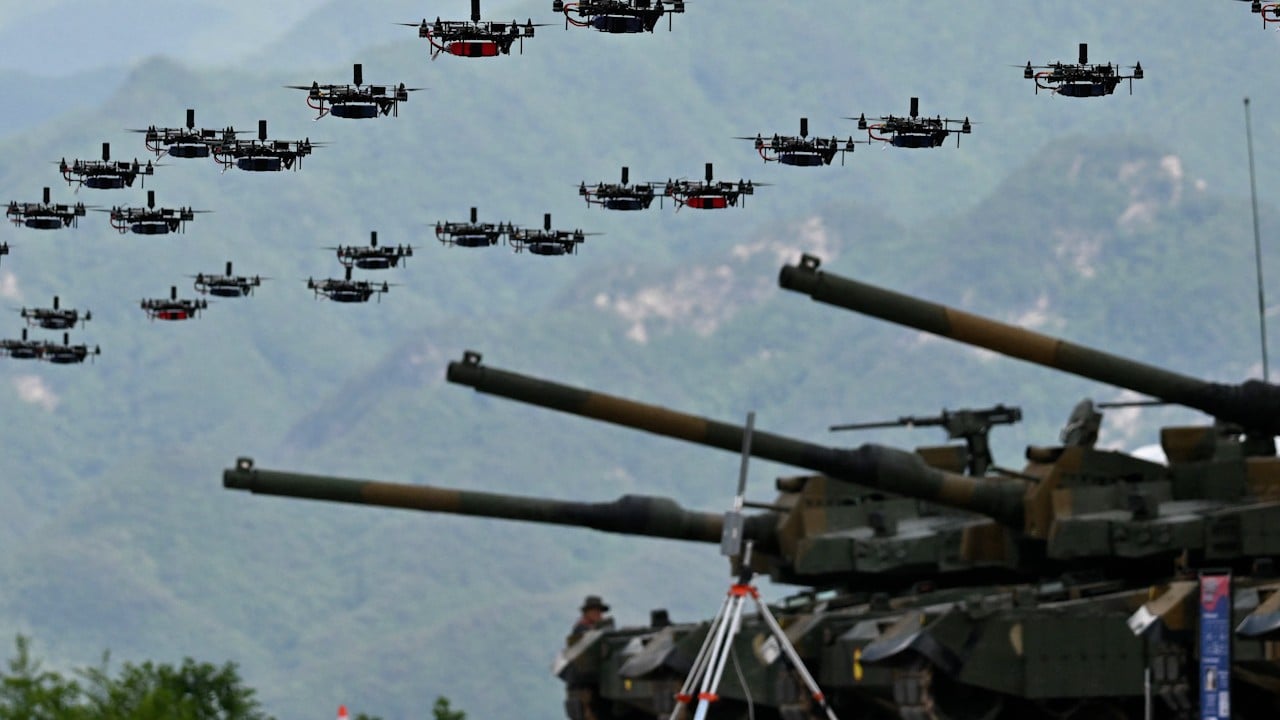
South Korea, US troops hold large live-fire drills near border with North Korea
- The exercises, taking place until mid-June, mark 70 years since the establishment of the military alliance between Seoul and Washington
- North Korea says the drills are ‘a typical … targeted war rehearsal’, highlighting that they are a few kilometres from its frontier
The South Korean and US militaries conducted large live-fire drills near the border with North Korea on Thursday, despite the North’s warning that it won’t tolerate what it calls an invasion rehearsal on its doorstep.
The drills, the first of five rounds of live-fire exercises through mid-June, mark 70 years since the establishment of the military alliance between Seoul and Washington. North Korea typically reacts to such major South Korean-US exercises with missile and other weapons tests.
Since the start of 2022, North Korea has test-launched more than 100 missiles, but none since it fired a solid-fuel intercontinental ballistic missile in mid-April.
It says the tests are a response to expanded military drills between the US and South Korea, but observers say North Korea aims to advance its weapons development and then wrest greater concessions from its rivals in eventual diplomacy.
The US-South Korean firing exercises, called “Combined annihilation firepower drills,” are the biggest of their kind. The drills have been held 11 times since they began in 1977, according to the South Korean Defence Ministry.
The drills involved 2,500 troops and 610 weapons systems such as fighter jets, attack helicopters, drones, tanks and artillery from South Korea and the United States, according to the South Korean Defence Ministry.
The most recent exercises in 2017 drew about 2,000 soldiers and 250 weapons assets from both countries.
The drills simulated artillery and aerial strikes on front-line North Korean military facilities in response to an attack.
North Korea says US military drills driving region to ‘brink of nuclear war’
The troops later practised precision-guided attacks on simulated targets in the rear areas to “completely annihilate” North Korean military threats, according to a ministry statement.
It said South Korea will seek to establish “peace through overwhelming strengthen” to counter North Korean threats.
North Korea didn’t immediately respond to the start of the drills. Last Friday, its state media called the drills “a typical North Korea-targeted war rehearsal,” saying it “cannot but take a more serious note of the fact” that the exercises are a few kilometres from its frontier.
The North’s Korean Central News Agency said the US and South Korea would face unspecified “corresponding responses” to the drills.

Earlier this year, the South Korean and US militaries conducted their biggest field exercises in five years. The US also sent the nuclear-powered USS Nimitz aircraft carrier and nuclear-capable bombers for joint exercises with South Korea.
Moon Seong Mook, an analyst for the Seoul-based Korea Research Institute for National Strategy, said North Korea could use the South Korea-US drills as a pretext to resume testing activities.
He said domestic issues such as North Korea’s push to increase agricultural production during the rice-planting season could still affect its decision on weapons tests.
“North Korea can’t help feel some burdens over the South Korea-US joint firepower drills being held for the first time in six years and in the strongest manner,” Moon said.


